39 sugars in food labels
Understanding Ingredients on Food Labels | American Heart … 06.03.2017 · But when it comes to sodium, added sugars and saturated and trans fats – which in excess can damage your heart health and increase your risk of heart disease and stroke – it can be difficult to tell just how much is in there. The reason is, these ingredients can go by several names. There are many terms used for sugar on food labels. Different Words for Sugar on Food Labels - Healthy Eating according to the u.s. dept. of health and human services, added sugars show up on food and drink labels under the following names: anhydrous dextrose, brown sugar, cane crystals, cane sugar, corn...
How To Read Food labels for Sugar | My Sugar Free Kitchen On the label check the sugars in the nutrition panel. 5g/ml or less of sugar per 100g/ml = this would count as low sugar content. It means 5% of the ingredients are sugar Between 5g/ml and 20g/ml of sugar per 100 grams = medium sugar content. With 20ml of sugar per 100 ml, this means the product is 20% sugar…not so good.

Sugars in food labels
Nutrition Labeling - The Sugar Association Having access to added sugars information on the Nutrition Facts Label increases consumer awareness of the quantity of added sugars in foods. "Consumers may or may not decide to reduce the consumption of certain foods with added sugars, based on their individual needs or preferences." 1 What are other names for sugar found on food labels? Sugar is mentioned under at least 61 distinct names on food labels. Sucrose and high-fructose corn syrup, for example, are popular names, as are barley malt, dextrose, maltose, and rice syrup, among others. What other names does sugar have, was also a question. Sugar's Most Common Nicknames. Dextrose. Food labelling - Making Sense of Sugar - UK contains a high (red), medium (amber) or low (green) amount of fat, saturates, sugars and salt. For traffic-light labels you will find different limits for total sugars depending on whether the product is a food or a drink and more importantly if the portion size is greater than 100g or 150ml. The same colour coding
Sugars in food labels. How to Read Nutrition Labels for Sugar - hekagoodfoods Nutritional information is divided into the following five major categories: Fat. Cholesterol. Sodium. Total carbohydrates. Protein. Since sugar is a type of carbohydrate, it's listed underneath the "total carbohydrates" section. To help reduce sugar consumption in America, the FDA's new nutrition labels include two different categories ... Food Labels: How to Spot Hidden Sugars | HuffPost Latest News Per capita consumption of added sugars has risen by 28 percent since 1983. Americans consume 22 teaspoons of added sugars a day, teens 34 teaspoons. Common sweeteners: corn sweetener, corn syrup, dextrose, fructose, fruit juice concentrates, glucose, high-fructose corn syrup, invert sugar, lactose, maltose, malt syrup, raw sugar, sucrose, sugar ... Food Labels | CDC If you eat the whole thing, you are eating 8 times the amount of calories, carbs, fat, etc., shown on the label. Total Carbohydrate shows you types of carbs in the food, including sugar and fiber. Choose foods with more fiber, vitamins, and minerals. Choose foods with lower calories, saturated fat, sodium, and added sugars. Avoid trans fat. Functions of sugars in food - Sugar Nutrition Resource Centre Simply removing sugar from many food products would necessitate the use of other, less “natural” compounds or ingredients in order to make the same product. Removing sugar entirely from many of the food products we consume would lead to shorter shelf life, a greater chance of contamination by mould or bacteria and so a food safety risk ...
5 ways to spot added sugars on food labels - Tryon Medical Partners Raw sugar. 2. Look for the word "includes". Recently, the Food and Drug Administration mandated that manufacturers must list added sugars in grams and as a percentage of the Daily Value. Now food labels have the word "includes" before added sugars to indicate that added sugars are included in the number of grams of total sugars in the ... Types of sugar to look for on food labels | Well+Good The Food and Drug Administration (FDA) has demanded a label makeover, specifically calling out the number of grams of added sugar, separate from the natural occurring sugars, such as from fruit. Sneaky Terms for Sugar on Food Labels - True Citrus Understanding how to translate the information on food labels can be challenging. Nutrition information can be confusing, and the list of ingredients can be worded in different ways to purposefully mislead you about how healthy (or unhealthy) the product actually is. Sadly, food labels have become more of a marketing tool rather than a resource of helpful information about the product ... Understanding Food Labels | The Nutrition Source | Harvard T.H. Chile implemented the Law of Food Labeling and Advertising in 2016, comprised of mandatory front-of-package (FOP) warning labels, restrictions on child-directed marketing, and the banning of sales in schools of all foods and beverages containing added sugars, sodium, or saturated fats that exceeded set nutrient or calorie thresholds. [1]
Food Labels (for Teens) - Nemours KidsHealth A food with 5% or less of a nutrient is low in that nutrient. A food with 10%–19% of a nutrient is a good source of that nutrient. A food with 20% or more of a nutrient is high in that nutrient. The information on food labels is based on an average adult diet of 2,000 calories per day. The actual number of calories and nutrients that kids ... Sugar and Food Labels: What to Look For - PartnerMD What to look for on food labels The best thing to do when you're looking at food labels is to look for anything that ends in -ose. Carbohydrates actually are sugars, but they come in different forms: complex and simple. What we're talking about here are simple sugars, like table sugar, cane syrup, and molasses. Sugars on food labels - Sugar Nutrition Resource Centre The Food Standards Code specifies that other added sugars must be listed using their specific names in the ingredients list. This can be very confusing. We look for 'sugar' but forget that cane juice, date sugar, fructose and glucose are all different types of sugars, also added to the food as an ingredient. Decoding Food Labels to Help Avoid High Blood Sugar These foods are often full of extra sugars and starches to make up for the lack of flavor and texture butter, or oil would typically provide, so they often wreak havoc on blood sugar levels. Instead, choose options that contain healthy fats (and a balance of fiber and whole grains), which can improve heart health.
Understanding food labels | Diabetes UK Labels on the front don’t include the amount of carbs, so check the label on the pack for the total carbohydrate, which includes carbohydrates from starchy food as well as sugars. The figures for sugars on traffic lights are for total sugars, which doesn’t tell you how much of the sugar comes from natural sources, such as fructose and how much is added, such as sucrose or glucose.
Understanding sugar content on food labels - Diabetes Care Community Understanding sugar content on food labels is important, to ensure that you're consuming healthy amounts. Reading the ingredient lists and nutrition facts tables on packaged foods is a helpful way for you to check what kind, and how much, sugar a product has. Finding sugar content in the ingredients list
How To Spot Sugar On Food Labels | HUNGRY FOR CHANGE One of the easiest ways to recognize sugar on a food label is by recognizing the -ose suffix. When you find words that end in -ose, there's a good chance it is sugar. Sugars ending in -ose include: Sucrose, Maltose, Dextrose, Fructose, Glucose, Galactose, Lactose, High fructose corn syrup, Glucose solids
Food Labels: Carbohydrates | Home & Garden Information Center The label can claim "no sugar added," yet the beverage or food can contain naturally occurring sugar from fructose in fruits or lactose in milk, as well as sugar in vegetables, cereals, grains, and legumes. Added sugars supply calories but little, if any, of the essential nutrients.
Sugar labelling - Food Standards Total sugars includes sugar that is naturally present in the food and sugar that has been added as an ingredient. The Code contains requirements for foods that make claims about sugar. For example, foods that claim to be 'low sugar' cannot contain more than 2.5 g of sugar per 100 mL of liquid food or 5g per 100g of solid food.
What to Know About Sugars on the Nutrition Facts Label The newFDA Nutrition Facts label presents information about sugars in two ways that are different from the original label. First, the amount of sugar found in one serving of a product is now displayed as "Total Sugars." This information was previously displayed on the original label as "Sugars."
Types of Sugar: 56 Common Ones You Should Know - Healthline Sucrose is also known as table sugar. It occurs naturally in many fruits and plants, and it's added to all sorts of processed foods. It consists of 50% glucose and 50% fructose. 2. High fructose ...
List of ingredients and allergens on food labels - Food labels ... Health Canada and the CFIA encourage food manufacturers and importers to use the title "May contain:" or "May contain" to introduce the cross-contamination statement on food labels. If a title is used, it must appear in bold when the statement appears on the same line as the ingredient list or the "food allergen source, gluten and added sulphites" statement [B.01.010.4(1)(d), FDR ].
What are 10 names for added sugars on food labels? added sugars appear on food and drink labels under the following titles, according to the department of health and human services: anhydrous dextrose, brown sugar, cane crystals, cane sugar, corn sweetener, corn syrup, corn syrup solids, crystal dextrose, evaporated cane juice, fructose sweetener, fruit juice concentrates, high-fructose corn …
List of ingredients and allergens on food labels - Canadian Food ... Health Canada and the CFIA encourage food manufacturers and importers to use the title "May contain:" or "May contain" to introduce the cross-contamination statement on food labels. If a title is used, it must appear in bold when the statement appears on the same line as the ingredient list or the "food allergen source, gluten and added sulphites" statement [B.01.010.4(1)(d), FDR ].
Learning To Read Labels :: Diabetes Education Online On a nutrition food label, subtract the fiber from the total carbohydrate amount. When you read food labels, the grams of sugar are already included in the total carbohydrate amount, so you do not need to count this sugar amount separately. The grams of sugar listed include both natural sugars, from fruit or milk, and added sugars.
Understanding food labels - Action on Sugar Checking food labels allows you to compare brands, varieties and flavours of products and choose those that are lower in sugars. Adding up the amount of sugars in the products you eat throughout the day will give you an idea of the amount of sugars you are eating. Foods low in sugars have less than 5.0g /100g
Added Sugars on the New Nutrition Facts Label | FDA The new Nutrition Facts label can help you compare and choose foods that are lower in added sugars. Check the label to see if foods are LOW or HIGH in added sugars. 5% DV or less is a LOW source of...
Added Sugars on the New Nutrition Facts Label | FDA 25.02.2022 · Labels on packages and containers of single-ingredient sugars and syrups such as table sugar, maple syrup, or honey will list the percent Daily Value for added sugars within the Nutrition Facts ...
How to identify Sugar on food labels! (Carb Basics pt 3) Common Names of Sugar found on Food Labels Sugar, Turbinado Sugar, Sucrose (white sugar), Glucose ( monosaccharides), Brown Sugar, Dextrin, Corn syrup, Lactose (milk sugar), Maple sugar, High fructose corn syrup or (HFCS), Barley malt syrup, Brown rice syrup, Maltose (corn derived), Chicory syrup, Date Sugar, Caramel, Molasses or molasses powder,
The Hidden Sugars in Your Food Labels — Madison Mae Let's talk about the different names sugar hides itself as in processed foods. Food companies have many different ways of labeling it on packaging in order to deceive consumers. Here are the common terms to look for: Fruit Concentrates You may see fruit on the label and think, oh good! It's natural. Wrong.
Reading food labels shouldn't be complicated. Here's how to understand ... Health Canada. On June 30, Health Canada announced new nutrition labelling regulations that will require prepackaged foods high in saturated fat, sugars and/or sodium to display a front-of-package ...
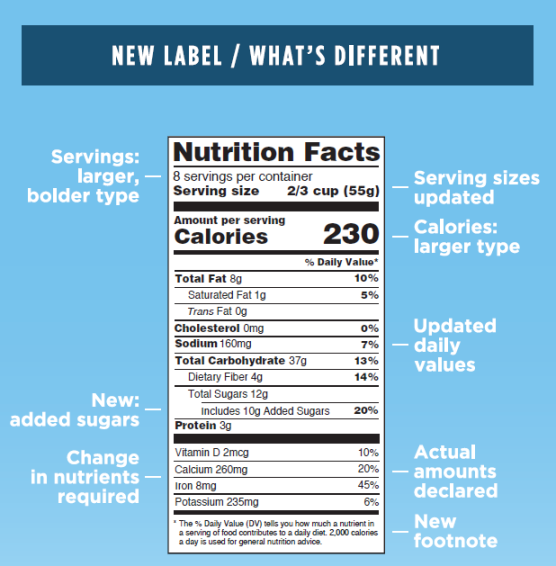
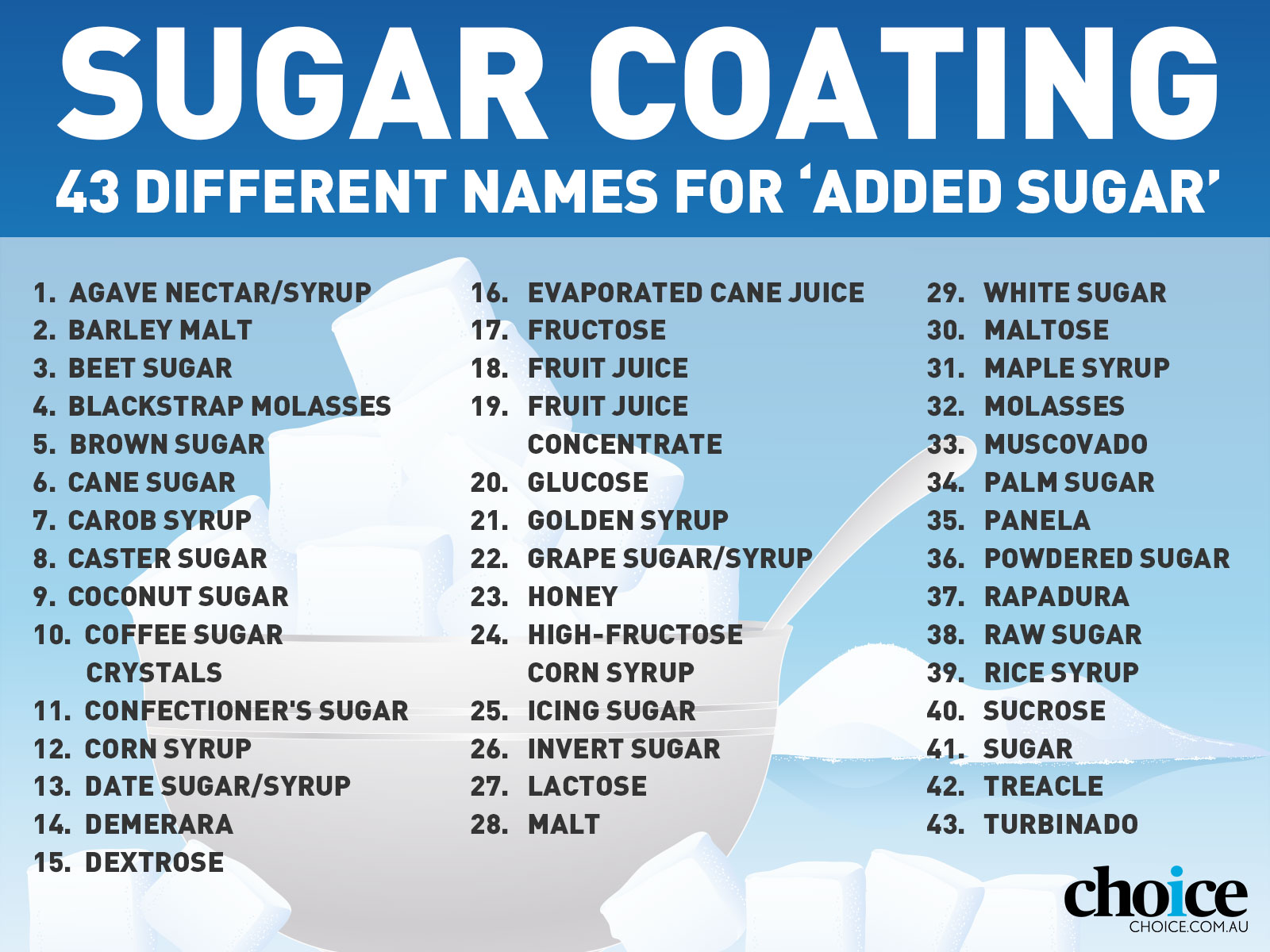
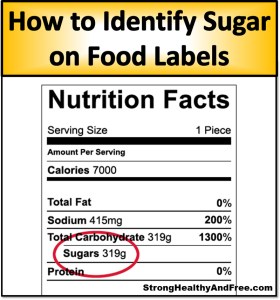




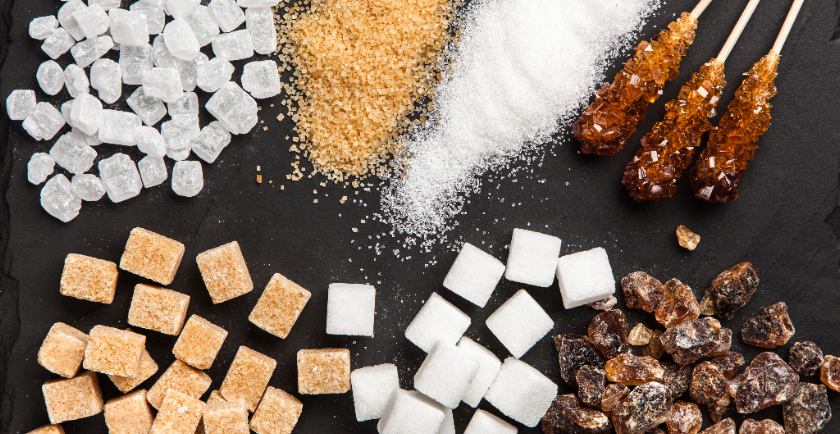

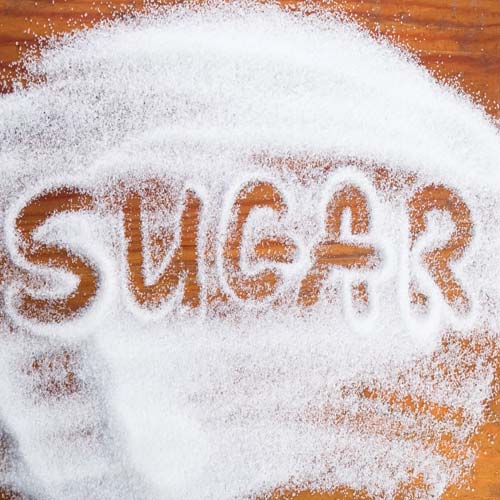

Post a Comment for "39 sugars in food labels"